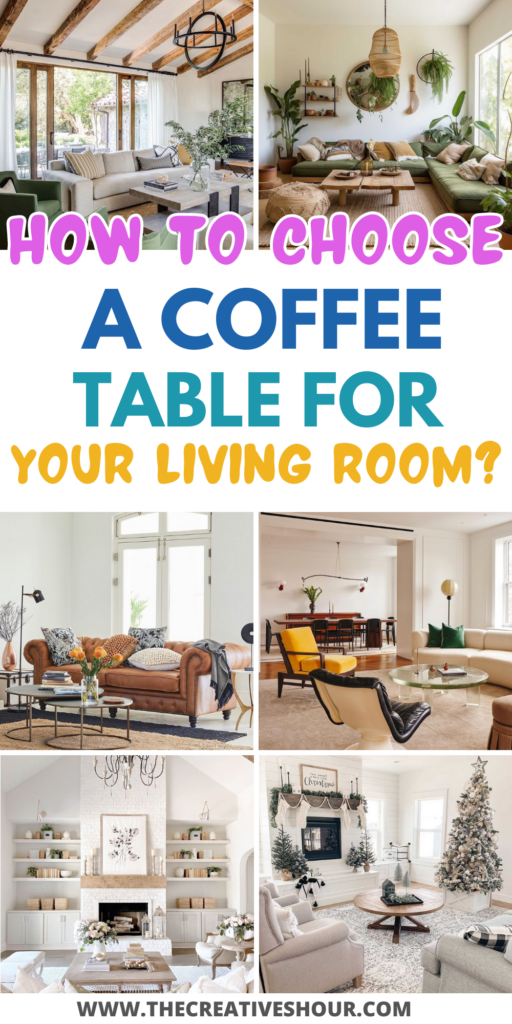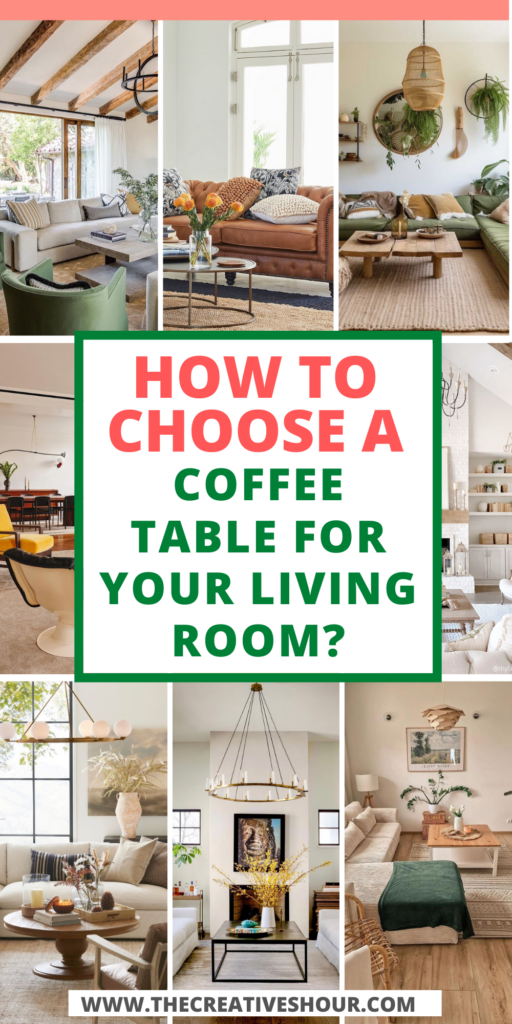
Choosing a coffee table might seem like a small detail when designing your living room, but it’s one of those pieces that can truly tie a space together.
Whether you’re aiming for a minimalist vibe or a cozy, lived-in feel, the right coffee table can elevate the overall aesthetic and functionality of your room.
With so many styles, shapes, and materials to choose from, how do you know which one fits best with your decor and lifestyle? Don’t worry, this guide will help you navigate through the decision-making process.
From selecting the perfect size to matching the table with your room’s vibe, let’s dive into everything you need to know to choose the coffee table that feels just right for your home.
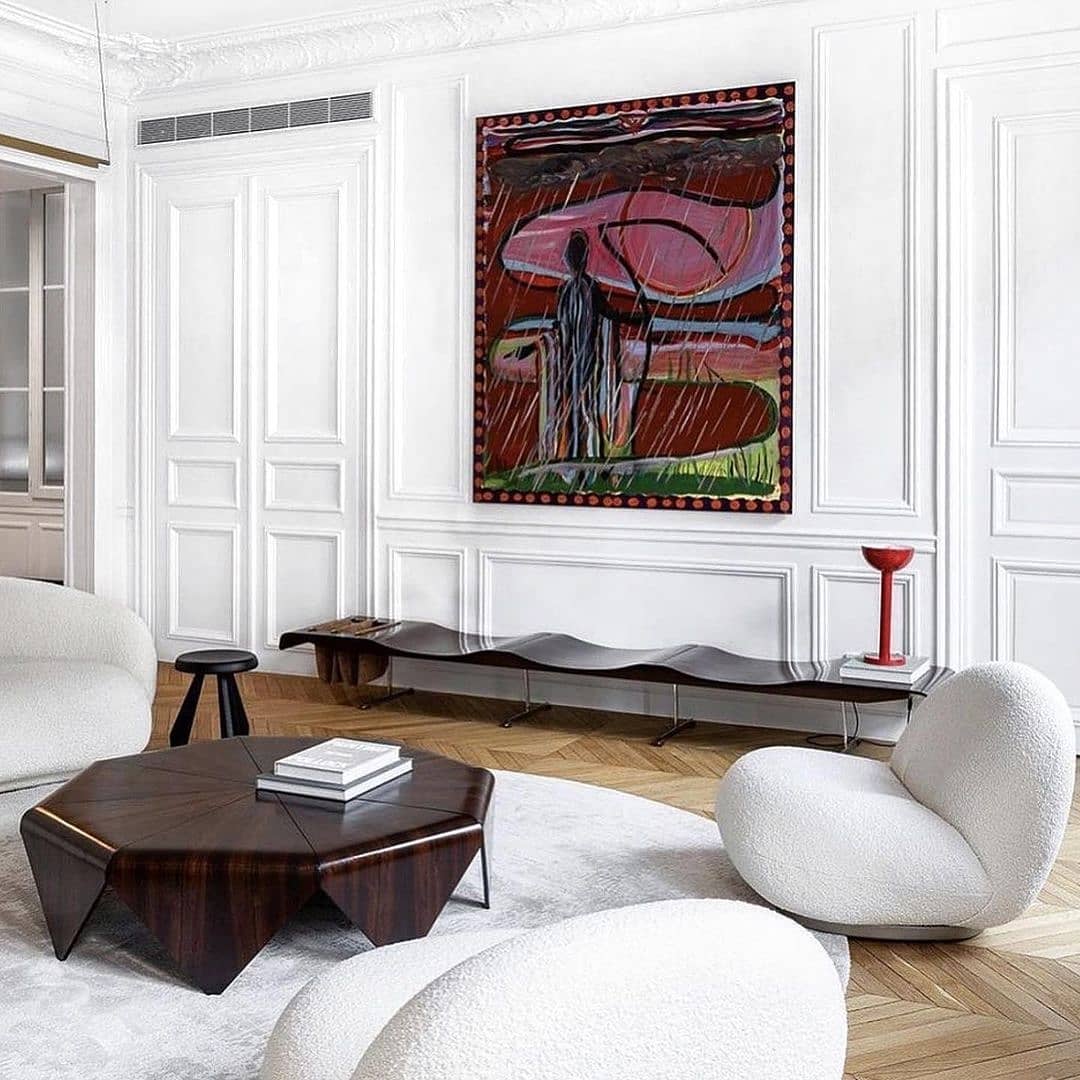
Image by larrys_list
How to Choose the Perfect Coffee Table for Your Living Room: The Ultimate Guide
A coffee table might seem like a straightforward choice, but it plays a pivotal role in balancing your living room’s design.
It’s not just a place for setting down drinks or remote controls—it ties your space together, blending form and function in one central piece. The right coffee table can enhance the overall aesthetic of your room while also serving practical needs.
In this ultimate guide, we’ll walk through everything you need to know to choose the ideal coffee table that perfectly complements your living room and lifestyle.
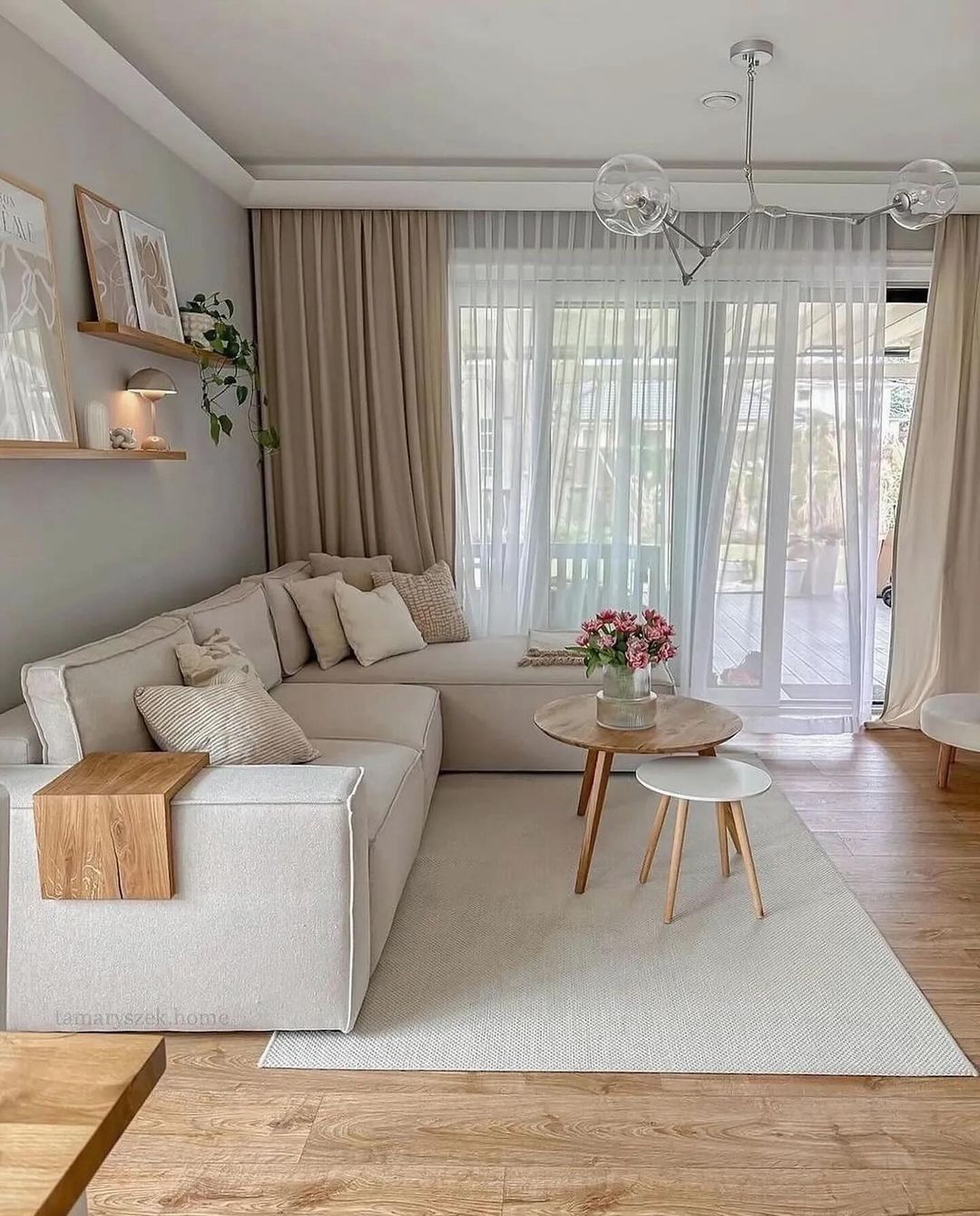 Image by livinginspiring
Image by livinginspiring
1. Measure Your Space Accurately
Before you even think about styles or materials, it’s crucial to get the measurements right.
Start by measuring the area between your seating—there should be enough room to comfortably walk around, but not so much that it creates a disconnect between the furniture pieces. Typically, you’ll want 12 to 18 inches of space between your sofa and the coffee table.
Also, think about the coffee table’s proportion relative to your seating. As a rule of thumb, the table should be about two-thirds the length of your sofa to ensure visual balance.
If you have a sectional or L-shaped couch, the table should fit snugly within the main seating area without extending too far beyond.
Emily Henderson, stylist and author, emphasizes that “a coffee table is a great way to make a visual statement!” She suggests selecting one that contrasts with the other pieces in your living room, using materials, colors, or patterns that stand out. This way, the coffee table becomes a focal point that enhances the room’s design.
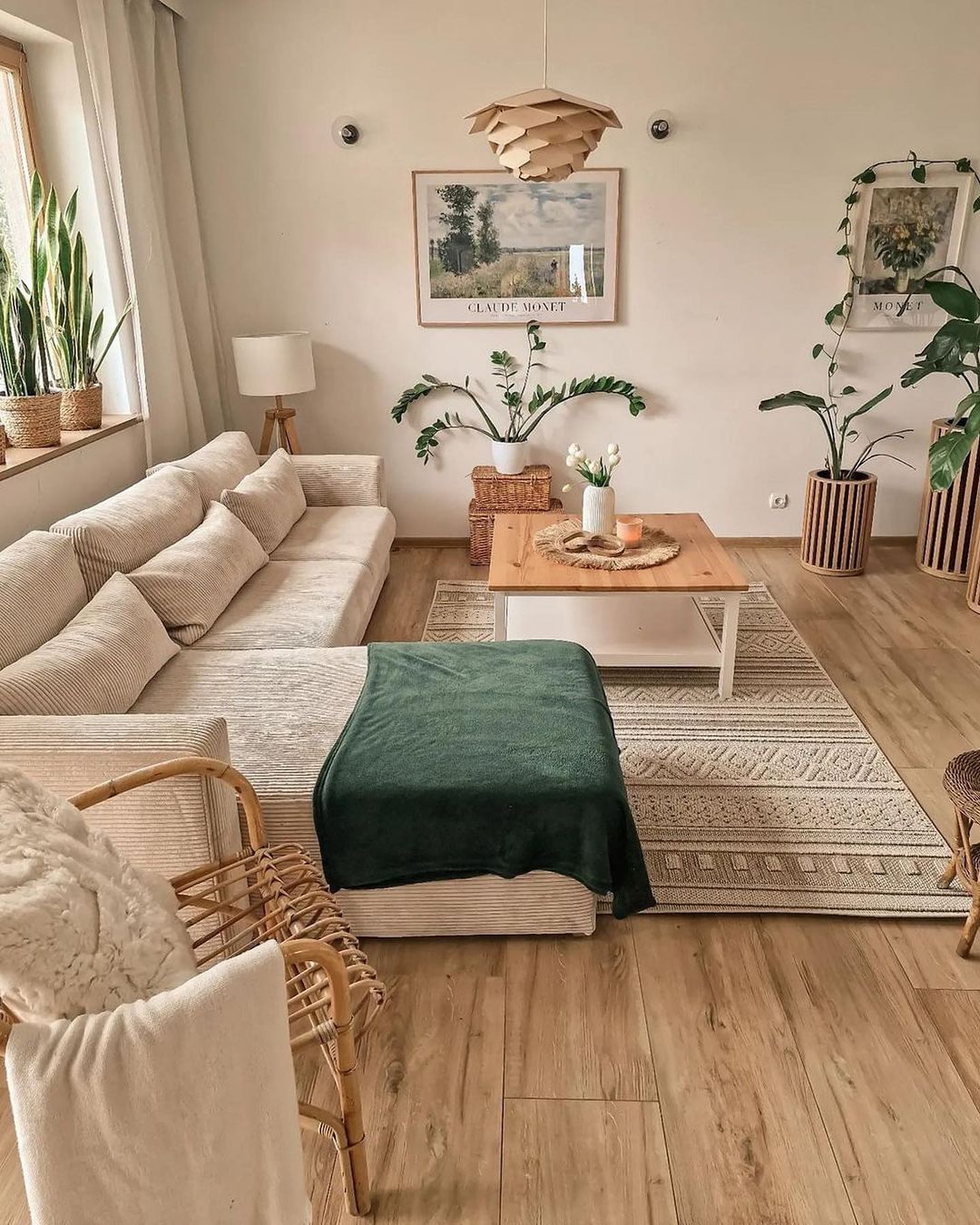 Image by gypsytribex
Image by gypsytribex
2. Coffee Table Shape Matters: Finding the Right Fit
The shape of your coffee table can impact the flow of your room as much as its size. Here’s a breakdown of different shapes and their ideal uses:
- rectangular coffee tables or Oval: These are the most versatile and commonly used shapes. Rectangular coffee table are great for larger seating areas, offering ample surface area for decor, drinks, and snacks. Oval tables serve the same function but with softer, curved edges—perfect if you want a gentler flow in the room or have children running around.
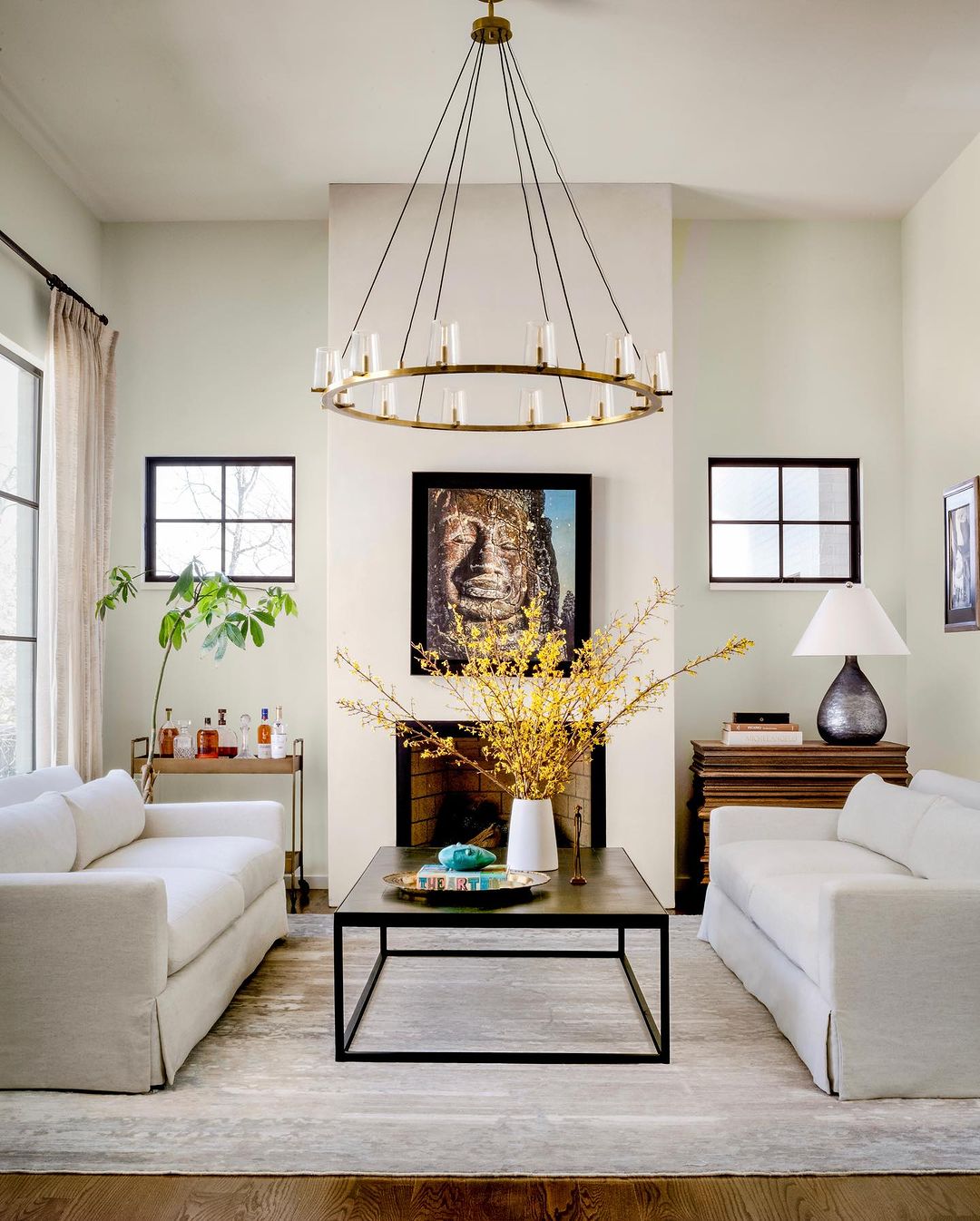 Image by lizmearns
Image by lizmearns
- Round table or Square: Round coffee table is ideal for smaller living rooms or spaces where seating arrangements are tight. As square coffee tables create a more intimate, cozy setup. Square coffee table, on the other hand, work best in rooms with more open layouts, especially when placed symmetrically with a larger sectional or multiple seating pieces.
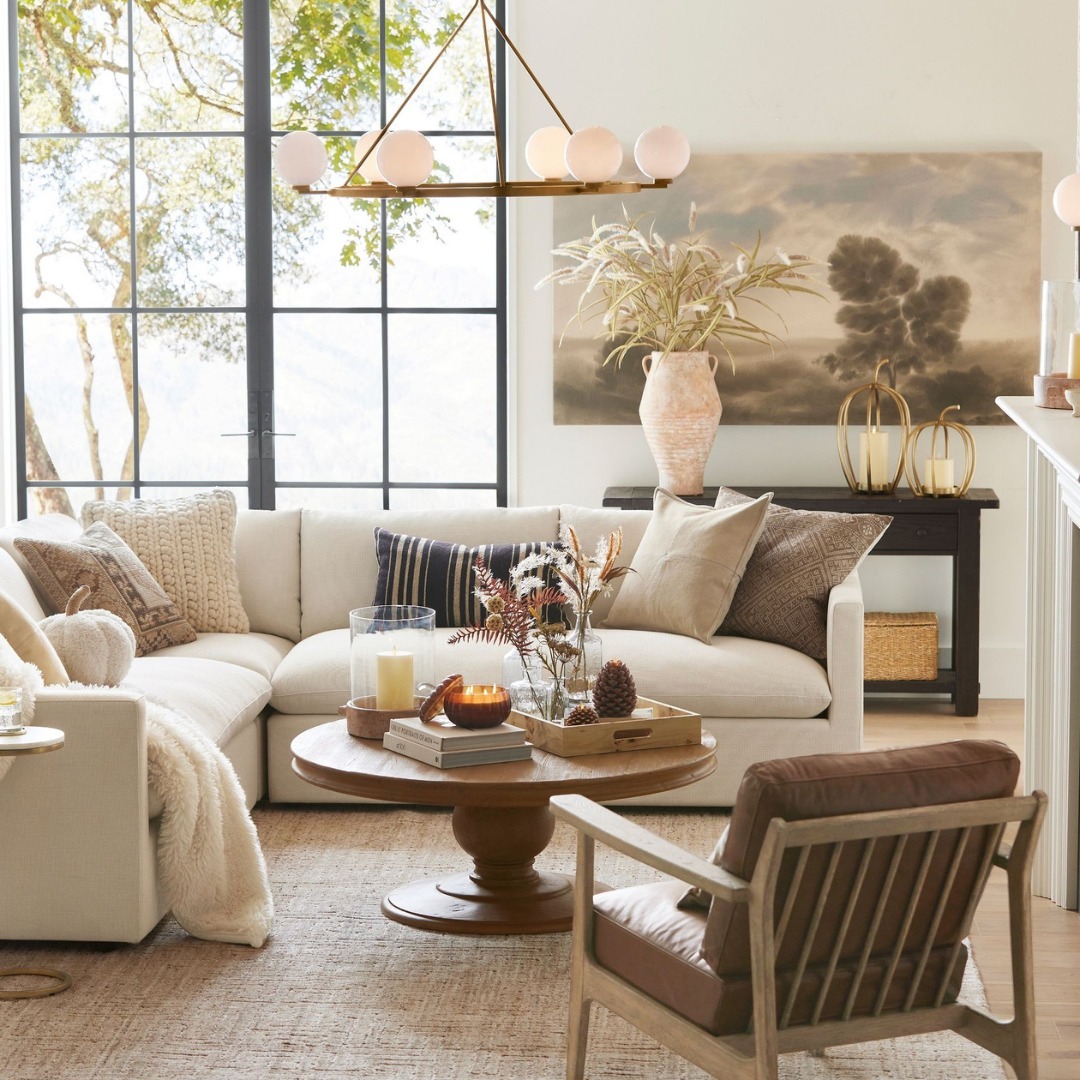
Image by potterybarncanada
- Abstract or Geometric: If you’re aiming for a modern, artistic vibe, geometric or asymmetrical tables can make a bold statement. Just be sure they don’t overpower the room—these designs work best as accent pieces in more minimalist spaces.
Heather Mastrangeli, an interior designer, advises choosing the coffee table last, after other seating arrangements are in place. “The table shape should be dictated by the furniture arrangement,” she says, suggesting that round tables are ideal for sectionals, while rectangular ones fit better with standard sofas.
3. Coffee Table Height and Comfort: Ergonomics Matter
Comfort is key when choosing a square coffee tables, particularly in terms of height and coffee table size. The table’s surface should be level with or slightly lower than the seat height of your sofa or chairs, typically around 16 to 18 inches for a standard sofa. This allows you to easily reach for a drink, book, or remote without straining.
If you entertain often or frequently use the table for meals or work, a slightly higher table—closer to 20-21 inches—might be more practical. Some coffee tables even come with adjustable heights, providing versatility if you need it for multiple functions.
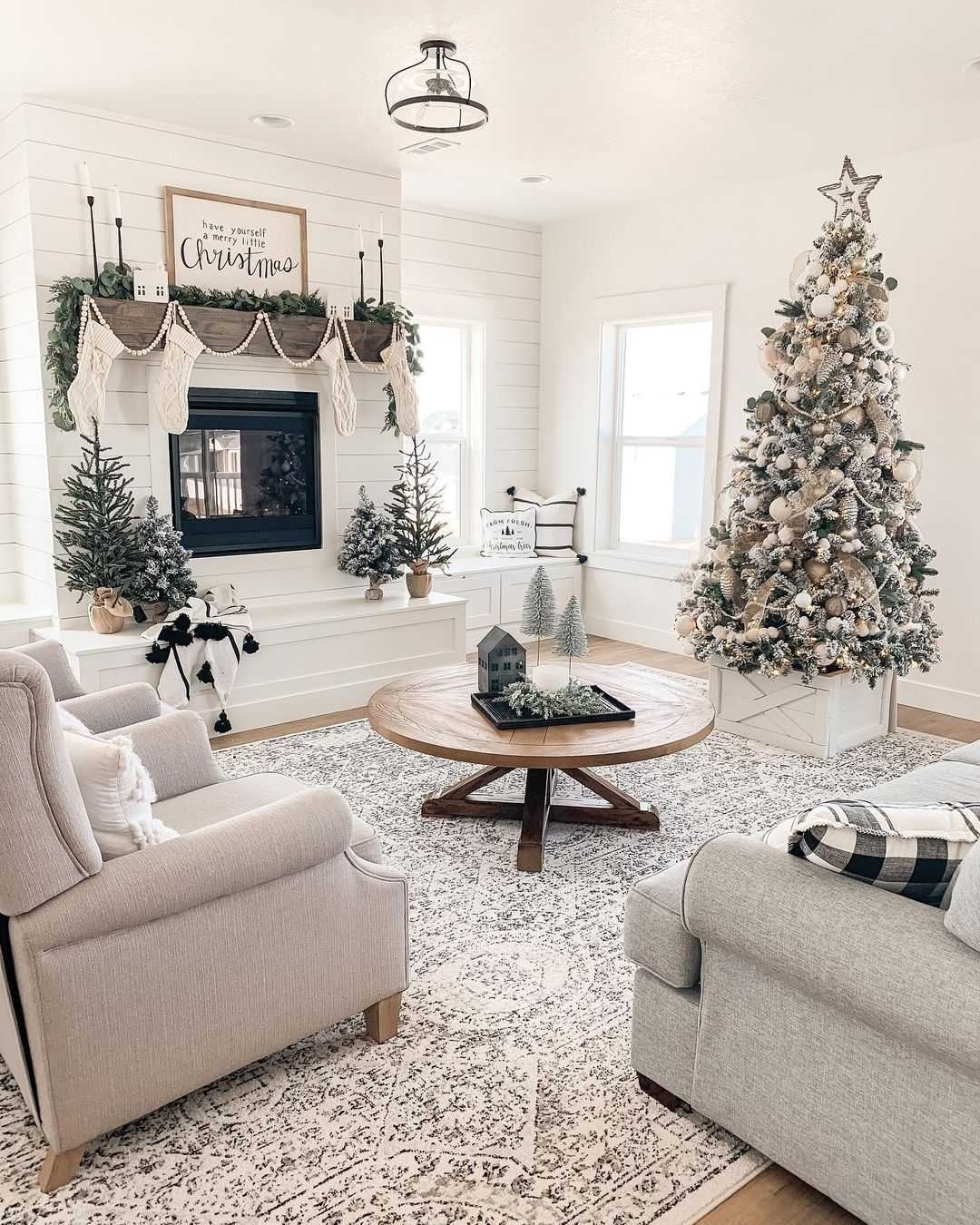 Image by decorsteals
Image by decorsteals
Sarah Sherman Samuel, a minimalist designer, believes in keeping the coffee table low and sleek: “The coffee table should always be lower than the seating height of your sofa. It keeps the flow of the room feeling natural and relaxed”
4. Material Choices: Balancing Style and Practicality
The material you choose can dramatically influence both the aesthetics and durability of your coffee table.
- Wood: Warm, timeless, and versatile, wood works in almost any living room style. Hardwoods like oak or walnut offer durability, while softer woods like pine give a more rustic, lived-in feel. Wooden tables with carved or distressed finishes are perfect for adding texture and depth to your space.
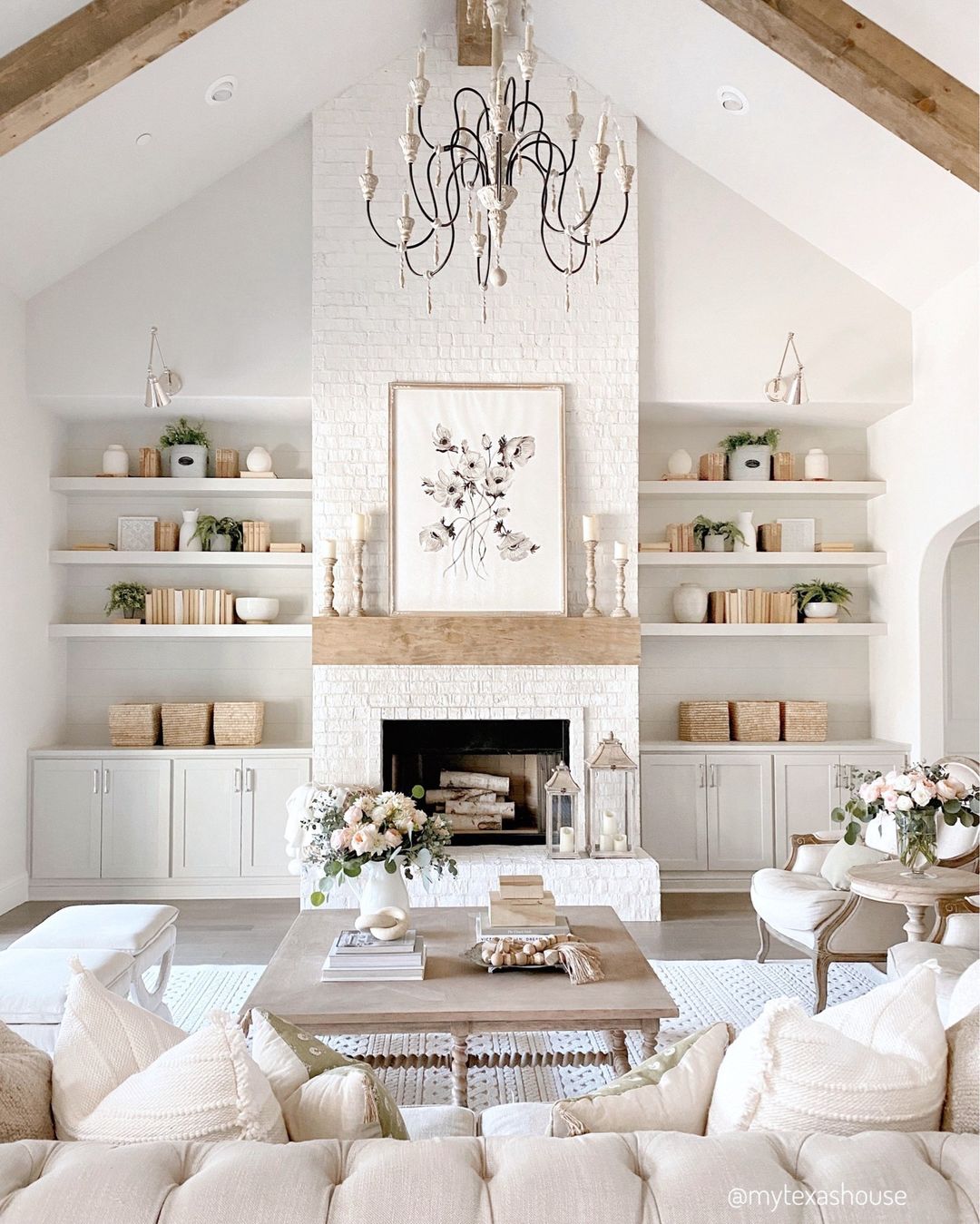 Image by shop.ltk
Image by shop.ltk
- Glass: Glass coffee tables create a sleek, modern look and can make small spaces feel larger by creating an illusion of openness. However, they can be high-maintenance, showing smudges and fingerprints easily. They’re best for adults-only homes or low-traffic areas.
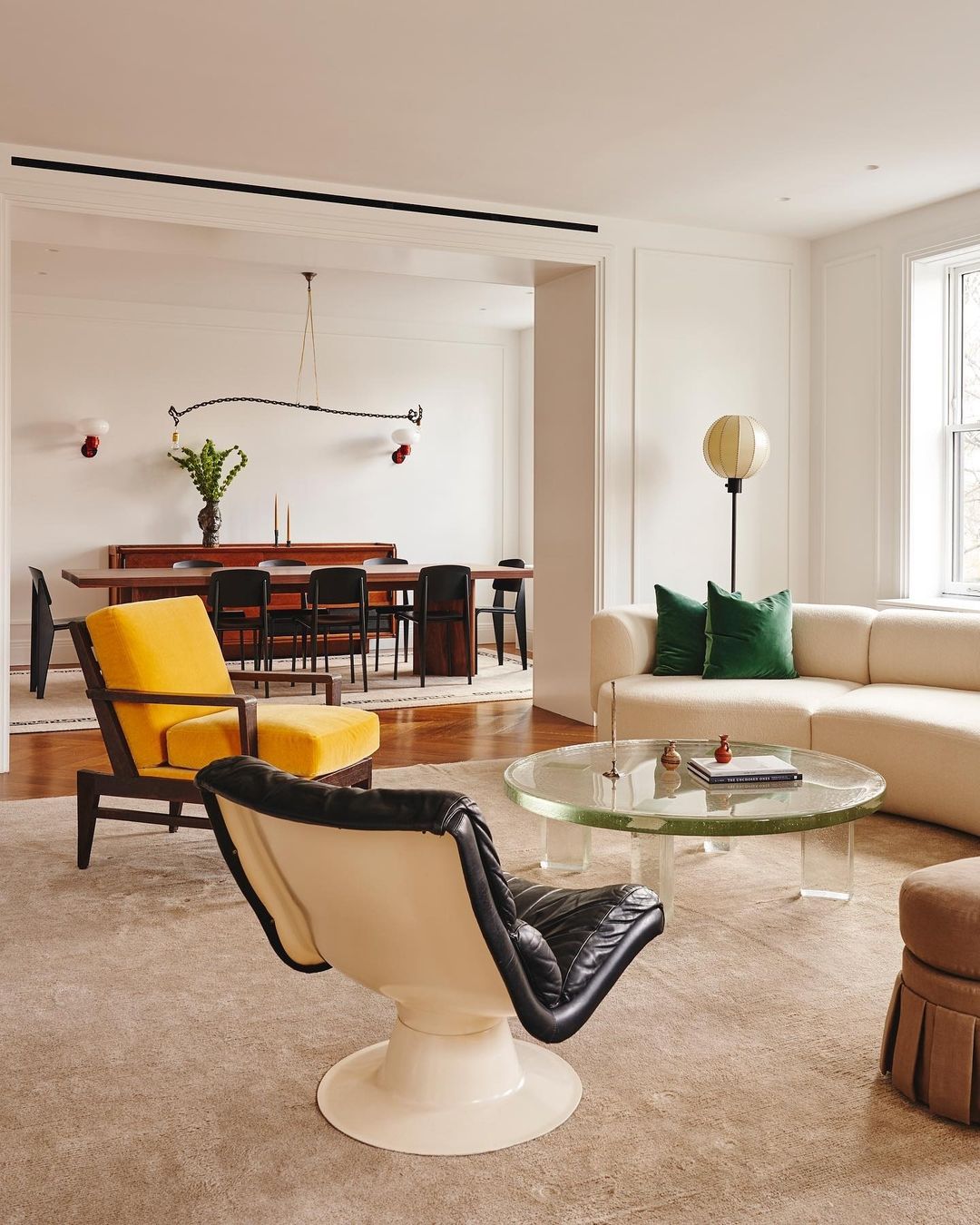
Image by theinvisiblecollection
Amber Lewis, founder of Amber Interiors, recommends considering the scale of the room: “A large living room can handle a more substantial coffee table, while smaller spaces benefit from lighter, airy designs like glass or acrylic tables”
- Metal: Metal coffee tables, often in brushed steel, brass, or iron, work well in industrial, modern, or minimalist spaces. They’re durable and add a touch of edge to the room, especially when paired with glass tops or marble accents.
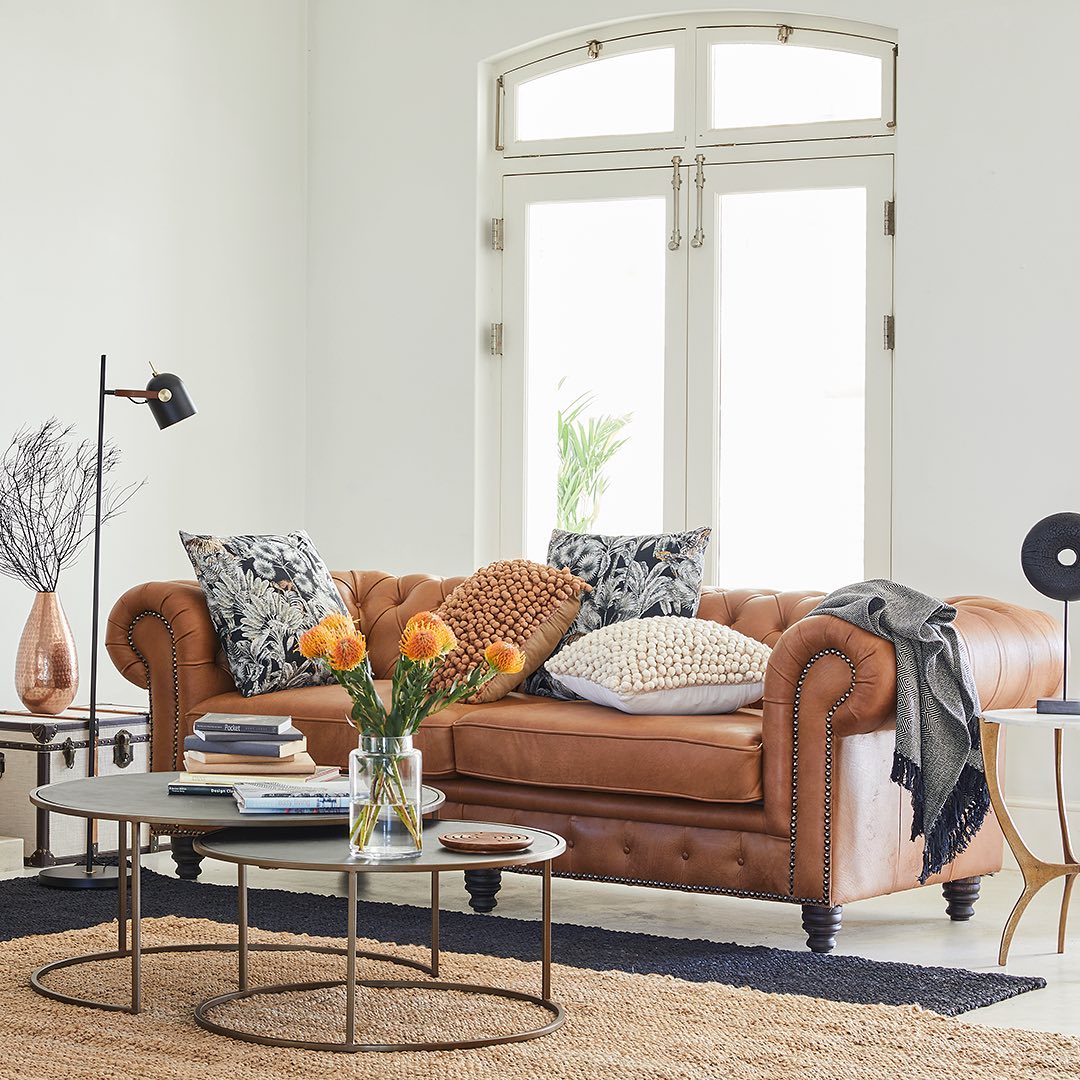 Image by coricraft_sa
Image by coricraft_sa
- Marble or Stone: Marble tables are statement pieces, perfect for adding a touch of luxury to your living room. However, they can be heavy and require careful maintenance to avoid stains or scratches. Stone tables, whether natural or composite, offer similar durability with a more rustic, earthy appeal.
Kristina Phillips, a designer, focuses on functionality: “If you’re using the table to rest your feet, consider an upholstered coffee table. But if you plan to display books or decorative trays, a solid surface is better suited”
5. Functionality: Beyond Just a Surface
A coffee table can be more than just a surface—it can also solve storage needs, especially in smaller spaces. If you need extra room for stashing magazines, remotes, or even board games, consider a coffee table with drawers, shelves, or built-in storage compartments.
- Lift Top Coffee Table: These allow you to convert the table into a work or dining space by lifting part of the surface, offering additional hidden storage beneath. This is a great option if your living space doubles as a workspace or dining area.
- Ottoman Coffee Tables: Upholstered ottomans with a hard, flat top can serve as both a coffee table and extra seating when needed. Many also come with hidden storage beneath the cushion, providing a clever way to keep your space tidy.
Doreen Amico-Sorell, an interior designer, highlights the importance of harmony: “For a U-shaped sectional, a round coffee table works well to soften the edges, while a rectangular table complements a traditional sofa”
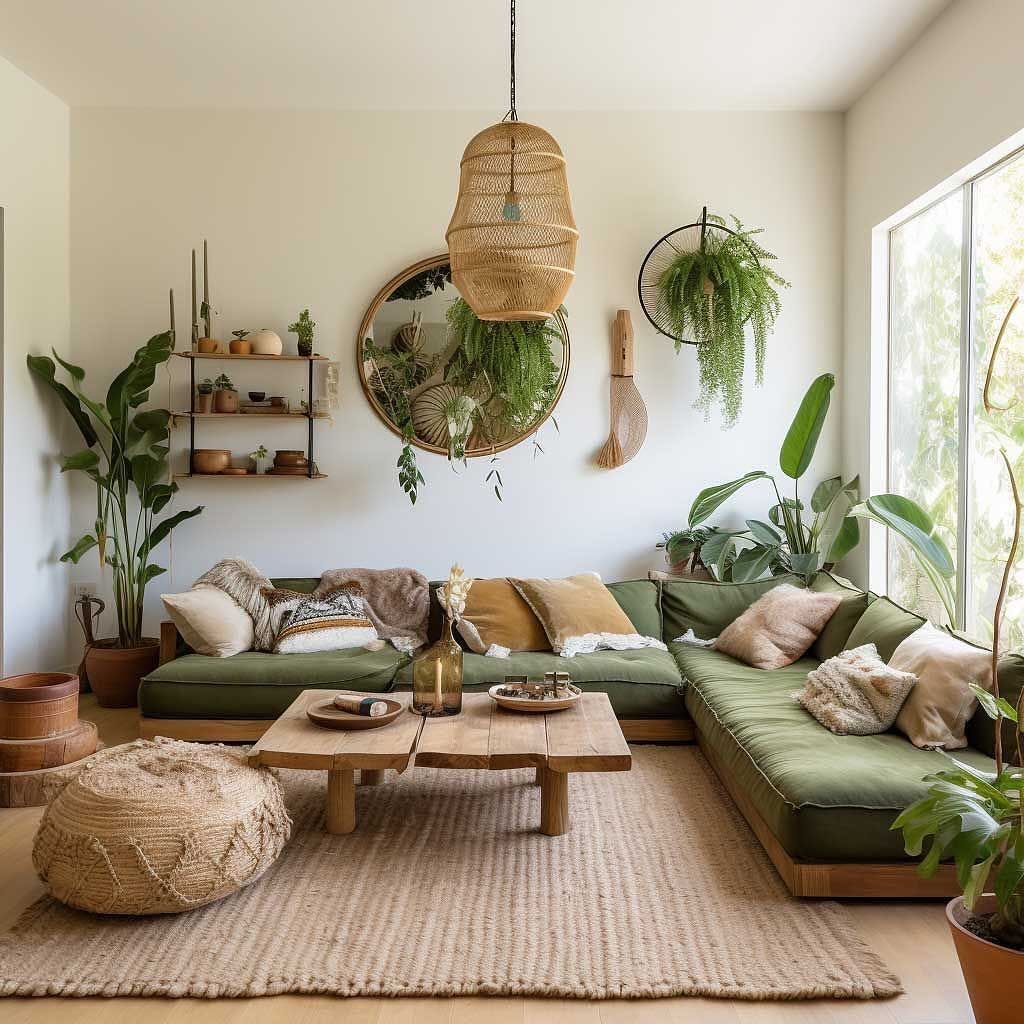 Image by my_bohointerior_
Image by my_bohointerior_
6. Align the Table with Your Aesthetic
Your coffee table should complement the overall style of your living room, blending seamlessly with the design rather than clashing with it. Consider these style options:
- Modern/Minimalist: Look for coffee tables with sleek lines, minimal ornamentation, and materials like metal, glass, or lacquered finishes.
- Rustic/Farmhouse: A wooden coffee table with a distressed or reclaimed finish adds warmth and a sense of history to the room. Farmhouse tables often feature chunky legs or open shelving, perfect for a more casual, cozy feel.
- Mid-Century Modern: Characterized by clean lines, tapered legs, and organic shapes, mid-century coffee tables often come in warm woods with minimalist designs. Look for those with subtle design details, like beveled edges or two-toned finishes.
- Bohemian/Eclectic: Embrace a mix of materials and textures—consider a table with a wooden top and metal base, or even something upholstered with bold, colorful patterns.
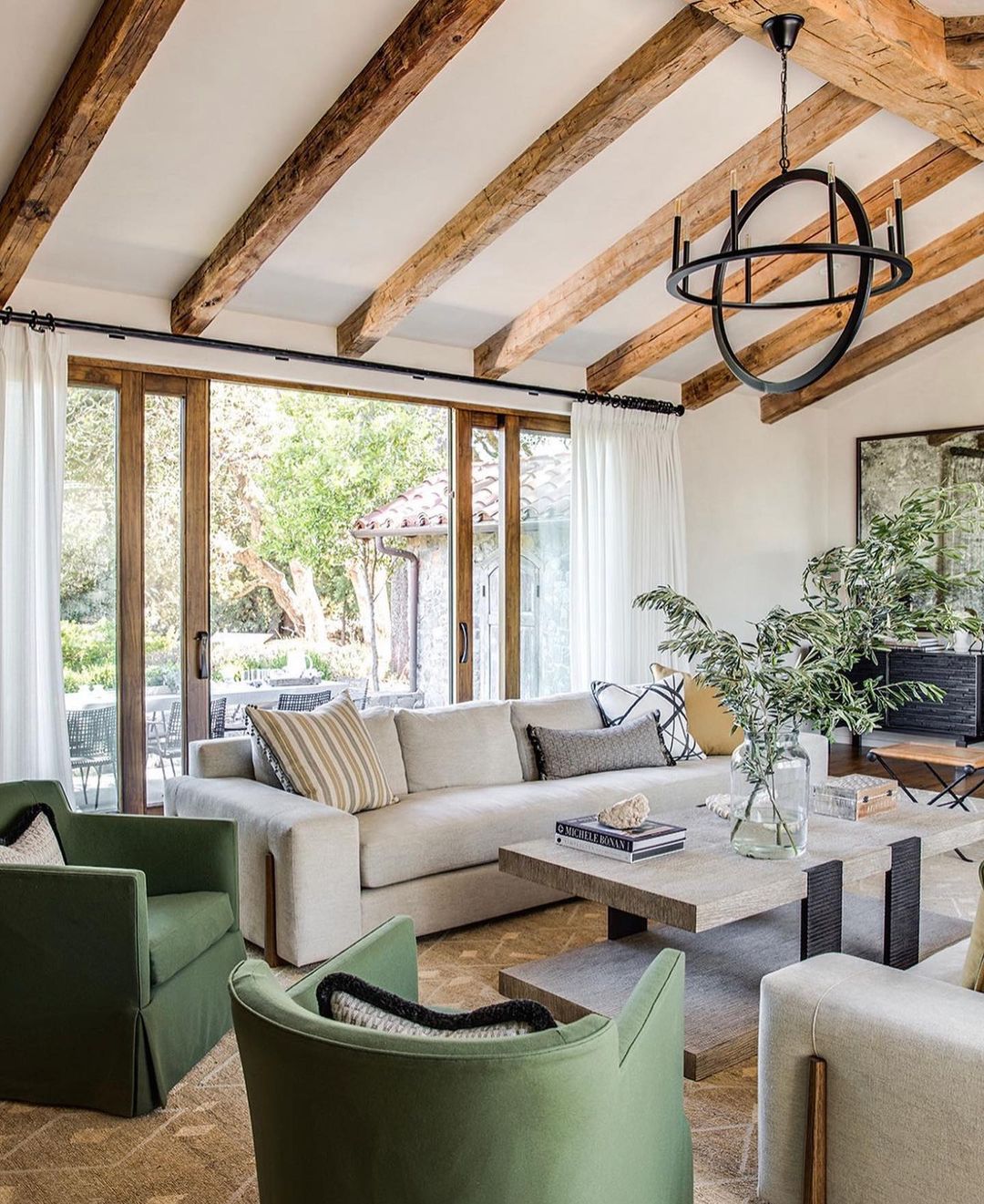 Image by gregoriuspineo
Image by gregoriuspineo
Shea McGee, co-founder of Studio McGee, advises focusing on the balance between function and aesthetics: “Look for a coffee table that complements the rest of your room while also being practical enough to serve your everyday needs, whether that’s entertaining or simply holding your favorite books”
7. Styling Your Coffee Table: Make It Personal
Finally, once you’ve chosen the perfect coffee table, it’s time to make it your own. The way you style your table can bring a sense of personality to the space. Stack a few well-chosen coffee table books, place a decorative tray with candles or small plants, or display unique finds from your travels. Just remember to keep balance and proportion in mind when arranging items—avoid overcrowding and leave room for functionality.
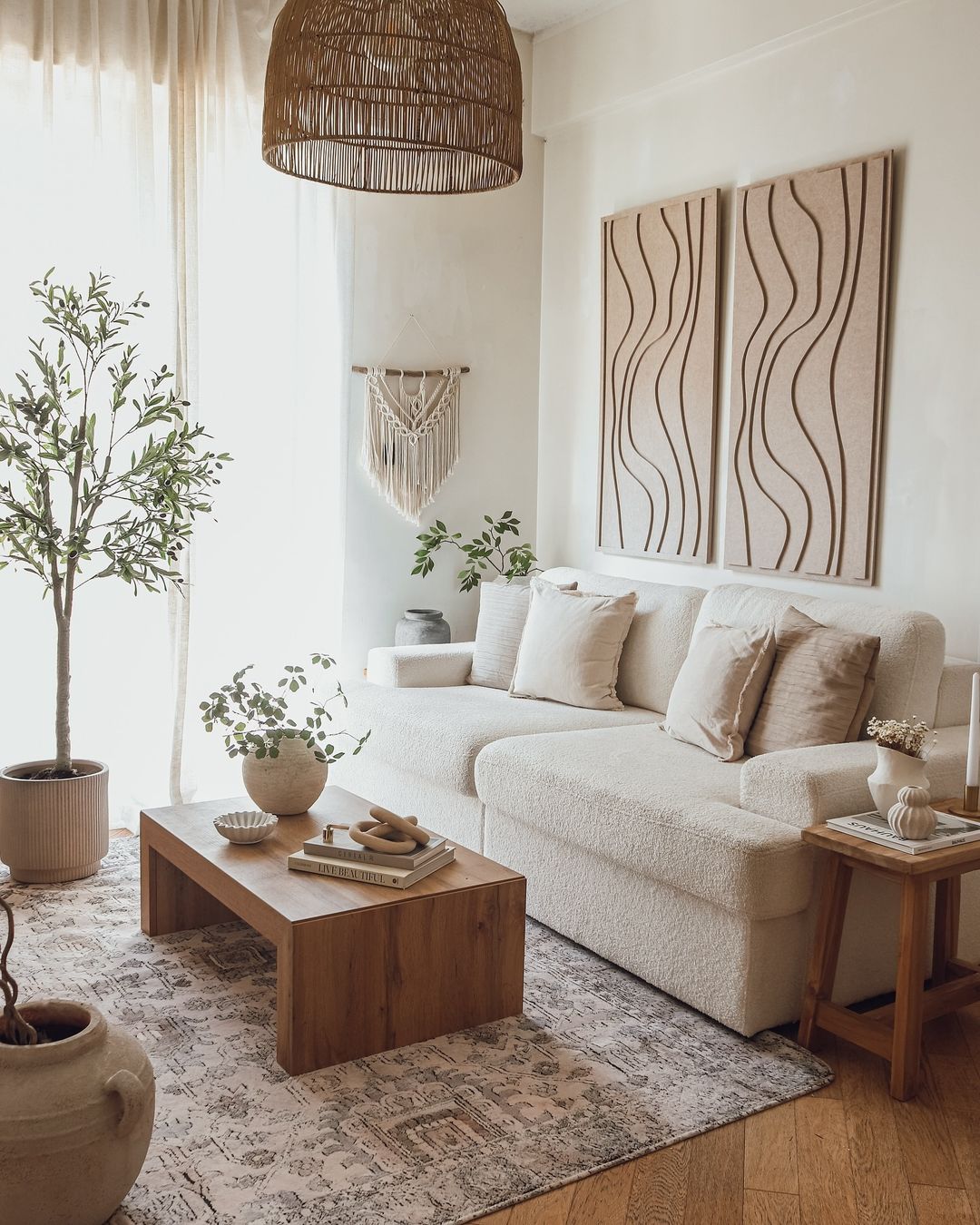 Image by thewhitehoneyhome
Image by thewhitehoneyhome
